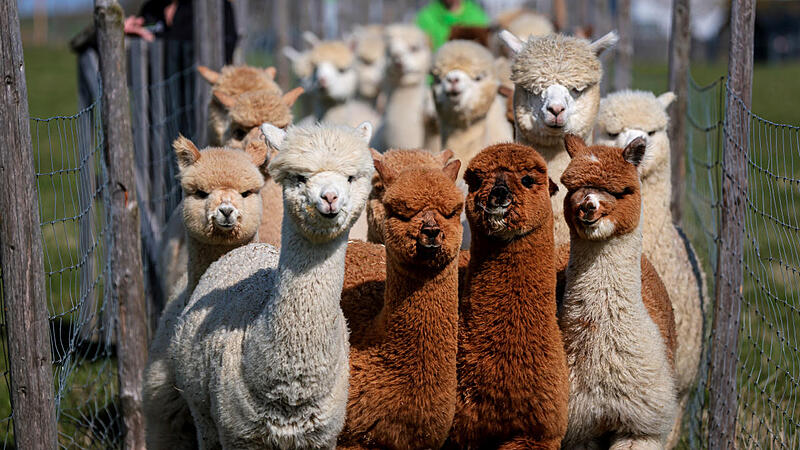An alpaca as a pet? That sounds unimaginable to most people. “The fact is, however, that these animals are increasingly being kept privately,” says Zwettler Harald Kneidinger. The 47-year-old should know because he has been breeding alpacas on his ten-hectare farm for 15 years and sells them for around 1,500 euros per animal. “During the Corona period, a particularly large number of people came up with the idea of taking alpacas as pets; the market was really empty back then,” says Kneidinger.
He himself started breeding because of the wool from alpacas, which in Austria is used, among other things, as filling for high-quality duvets. It was only later used for tourism. “My wife Michaela trains the animals to be on a leash and offers alpaca hikes,” says Kneidinger. In his opinion, the special thing about the animals is the calmness that they radiate.
The United Nations has declared 2024 the International Year of the Camelid and, in consultation with the Alliance for Humans & Animals Foundation, has also declared llamas & alpacas to be pets for 2024. Camelids are divided into Old World and New World camelids. Dromedaries and Bactrian camels are Old World camelids. They live primarily in the steppes and deserts of Asia and on the Arabian Peninsula, but also in North Africa.
New World camelids come from South America, where guanacos (wild form of llamas) and vicunas (wild form of alpacas) live. The domesticated llamas and alpacas have long been important companions of people in South America as pack animals and wool producers.
Keeping alpacas
According to Kneidinger, anyone who wants to have alpacas as pets must consider the following:
Big reason: For two animals, which must be kept at least, you need a property of 1100 square meters, which must be fenced. For each additional alpaca you need another 100 square meters. A stable is also necessary.
- Same-sex attitude: only stallions or only mares may be kept together.
- Lining: grass and hay
- Handling: Alpacas prefer to be among their own kind. But you can teach them halter handling.
- Care: The claws must be trimmed regularly and the wool must be shaved once a year. The animals should also be dewormed.
- Age: 20 to 25 years
Alpaca blood – hope for medicine
In contrast to humans, the immune systems of animals from the camel family, including alpacas and llamas, only produce very small antibodies when they are sick. In medicine, these so-called nanoantibodies are considered a precision weapon against many serious diseases. These nanobodies are already being used successfully in the fight against anthrax and a rare blood clotting disorder. Scientists around the world are conducting research with nanoantibodies in order to find more precise therapies against cancer and better diagnostic procedures for Alzheimer’s.
My themes
For your saved topics were
new articles found.

info By clicking on the icon you can add the keyword to your topics.
info
By clicking on the icon you open your “my topics” page. They have of 15 keywords saved and would have to remove keywords.
info By clicking on the icon you can remove the keyword from your topics.
Add the topic to your topics.
Source: Nachrichten




